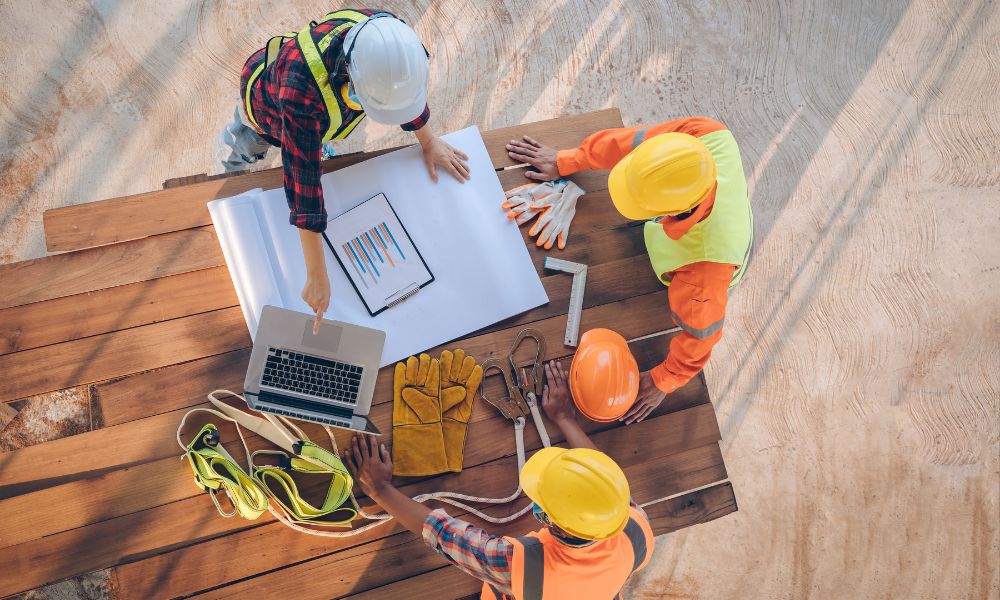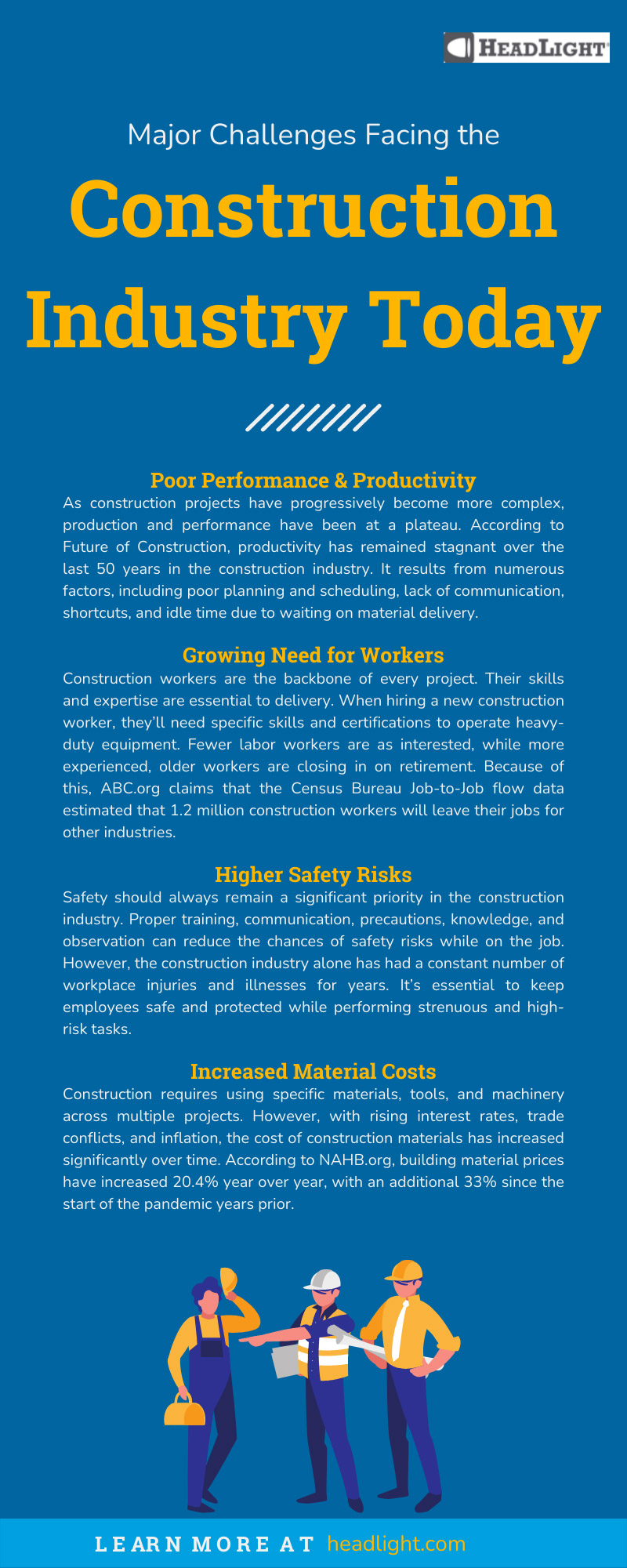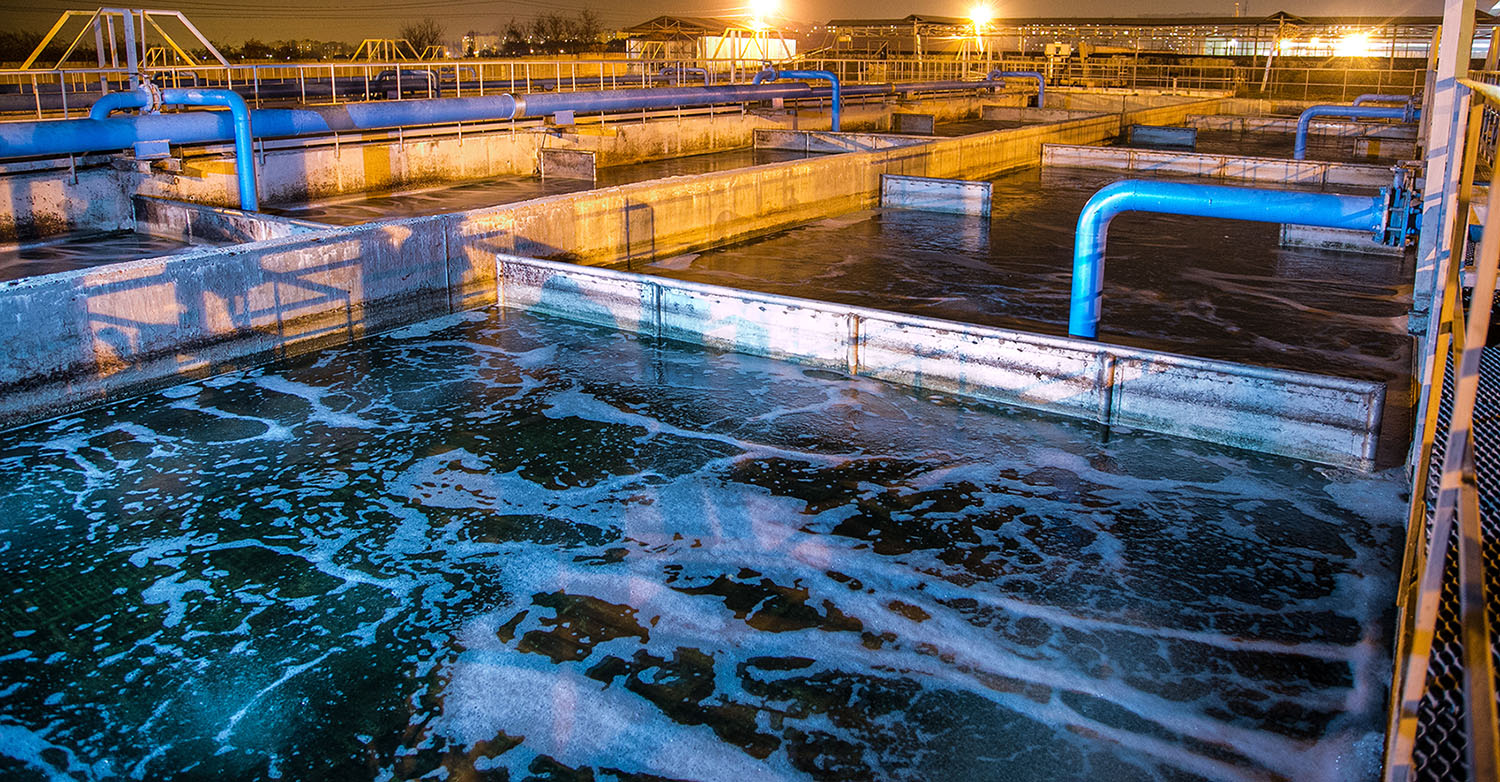
Whether it’s replacing a broken-down bridge or widening a slim road, infrastructure construction is core to the functioning of our country. It stems far back in history, becoming more sophisticated as rules, regulations, equations, and improvements in equipment and materials came to be. Despite construction being one of the most innovative industries, many complications have arisen over the years.
America’s infrastructure lags behind that of many countries. The infrastructure construction industry needs to do more faster and within the context of a labor shortage. Read on to learn more about five significant challenges the infrastructure construction industry faces today.
How Has Infrastructure Construction Transformed?
Humans have been modifying their environments for millennia. Archaeologists and historians have found clues of early construction techniques in all parts of the world. As materials and tools have evolved, the sophistication of the built world has also evolved. Even so, evidence of complex engineering dating back thousands of years, including pyramids, aqueducts, walls, and complex cities, remains standing.
Over time, the people in places like Egypt, Rome, China, Central America, and Greece paved the way by creating complex temples, palaces, and roads. As many cultures shifted toward agricultural-based cities, the complexity of infrastructure construction increased by necessity. With the help of engineers and architects, the establishment of rules, and the development of new materials, the modern infrastructure construction industry, as we know it today, began to take shape in the 16th century. From there, the Industrial revolution made breakthroughs, such as the mass production of cast iron.
Infrastructure Construction Considerations
Numerous considerations go into delivering a modern infrastructure project. Large infrastructure projects have multiple stages and many stakeholders.
Additionally, it’s critical to consider the available tools, technology, and materials needed to complete the project. Staying on top of inventory within the construction site will help reduce lag time and overall costs. Lastly, safety and security are vital to reduce health risks and prevent unwanted problems on the job site.
Major Construction Challenges
Today, there are a handful of infrastructure construction industry challenges that can slow progress. While the industry has grown substantially globally, numerous setbacks can affect the outcome of construction projects. Additionally, there are new regulations and rules that businesses need to know to prevent future accidents, claims, and re-work.
Poor Performance & Productivity
As construction projects have progressively become more complex, production and performance have been at a plateau. According to Future of Construction, productivity has remained stagnant over the last 50 years in the construction industry.
It results from numerous factors, including poor planning and scheduling, lack of communication, shortcuts, and idle time due to waiting on material delivery. Secondly, the decrease in working staff has significantly hindered productivity. Moreover, as infrastructure projects continue to grow, so does their complexity. Proper project budgeting and not reaching the project deadline can significantly hinder the project.
Design complexity is another aspect of poor productivity, as designs are subject to change, and construction companies can have a difficult time keeping up. Constant design changes can affect a project’s given timeline and necessitate deadline extensions or result in budget overruns.
Lastly, as infrastructure technology continues to improve and change, staying on top of safety systems, equipment, and programs can present a challenge for some workers. Without the use of technology for heavy lifting, data streamlining, and safety, project productivity and progress can slow down considerably.
Growing Need for Workers
Construction workers are the backbone of every project. Their skills and expertise are essential to delivery. When hiring a new construction worker, they’ll need specific skills and certifications to operate heavy-duty equipment.
Fewer labor workers are as interested, while more experienced, older workers are closing in on retirement. Because of this, ABC.org claims that the Census Bureau Job-to-Job flow data estimated that 1.2 million construction workers will leave their jobs for other industries.
By solving labor gaps, many professions crucial to the construction process, including electrical technicians, architects, engineers, and more, can benefit. Mentorships and construction staffing agencies can help businesses bring training staff or experienced workers to the workforce.
Higher Safety Risks
Safety should always remain a significant priority in the construction industry. Proper training, communication, precautions, knowledge, and observation can reduce the chances of safety risks while on the job. However, the construction industry alone has had a constant number of workplace injuries and illnesses for years. It’s essential to keep employees safe and protected while performing strenuous and high-risk tasks.
Training is the most critical step in a construction worker’s career. It can easily make or break their work efforts. Enforcing safe work practices and providing safety tools and training are essential to job site safety. Safe workplaces can boost a company’s and an industry’s reputation and is therefore key to hiring and retaining talent.
Increased Material Costs
Construction requires using specific materials, tools, and machinery across multiple projects. However, with rising interest rates, trade conflicts, and inflation, the cost of construction materials has increased significantly over time. According to NAHB.org, building material prices have increased 20.4% year over year, with an additional 33% since the start of the pandemic years prior. Materials such as concrete products, iron and steel, lumber, wire and cable, and more continue to rise in cost.
As a result, construction companies make many decisions to save time and money on their upcoming projects. Budget adjustments, trade times, and employment cuts considerably impact project progress.
Lack of Clear Communication
Communication is vital when it comes to any construction project. Communication impacts everything, from when and how much to pay sub-contractors to safety and compliance. It’s crucial to ensure clear communication between all teams to accomplish tasks and follow safety procedures.
District managers can spend whole days driving between job sites to communicate to their disparate teams, and inspectors might spend a whole day chasing signatures. Cloud-based technology reduces the need for in-person meetings and eases the communication burden. Technology solutions can ensure all stakeholders, from the field to the office, are on the same page. Additionally, using and sharing data analytics across your team can help predict future outcomes if you’re unsure where to take your steps.
When it comes to directing construction oversight and inspection, we at HeadLight Technologies have you covered. Our construction management software provides job site stakeholders with trustworthy data and helps them tackle complex safety and communication problems. We help streamline visual-based data and provide solutions to prevent lawsuits, negative environmental impact, and injuries for you and your workers. If you have inquiries regarding our solutions, please reach out to us today, and we’ll help you get started.



